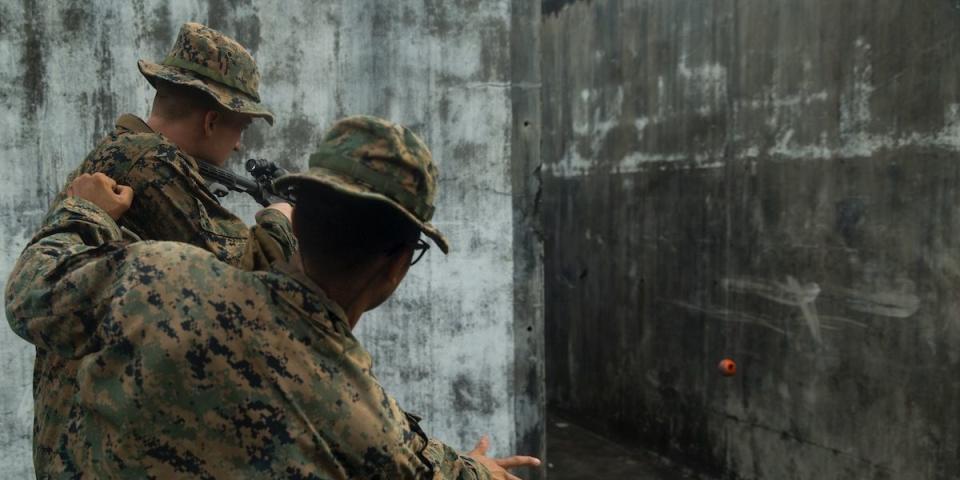Soldiers Could One Day See Around Corners With the Help of Lasers

Scientists are exploring ways to use lasers to "see" around corners.
Two promising methods complement each other, one gathering general information about an environment and the other more detailed—but limited—images of objects.
The two technologies could some day help soldiers "read" rooms, identifying adversaries without exposing themselves to enemy fire.
Here’s an unexpected way lasers might beam their way onto the battlefield: sneaking a look around corners to detect adversaries.
University researchers funded by the Pentagon can now get an idea of what’s in a room by reading the interference pattern of a laser beam. This could someday lead to devices that can peer into a room and detect everyone inside, and identify if they are armed.
According to IEEE Spectrum, there have been several methods of using lasers to peep around corners. The first way studies the time it takes a laser light to reach a reflective surface, then go on to reach an object, then come back again. The new process works like this:
The latest method looks instead at speckle, a shimmering interference pattern that in many laser applications is a bug; here it is a feature because it contains a trove of spatial information. To get the image hidden in the speckle—a process called non-line-of-sight correlography—involves a bear of a calculation. The researchers used deep-learning methods to accelerate the analysis.
The original method is useful for a more general look inside a room, for the barest of details, while speckle analysis can discern detailed information within a narrow field of view. The two methods require different systems to operate.
A system that can detect people and things inside a room and gather details—all without exposing the user to enemy fire—would be very useful to special forces and ground troops. The Pentagon believes the next battlefield is the “megacity,” cities of 10 million or more people that live in densely-packed neighborhoods. The ability to clear a room, apartment, apartment building, and a city block quickly—and safely—would help friendly forces locate and isolate terrorists, guerrillas, and enemy soldiers and separate them from civilians.
The technology is still limited to laboratory use, where conditions can be carefully controlled. Someday in the future, soldiers could carry handheld devices with them that can tell them if the room ahead holds civilians need assistance or someone waiting in ambush.
It can’t happen soon enough.
Source: IEEE Spectrum.
You Might Also Like

